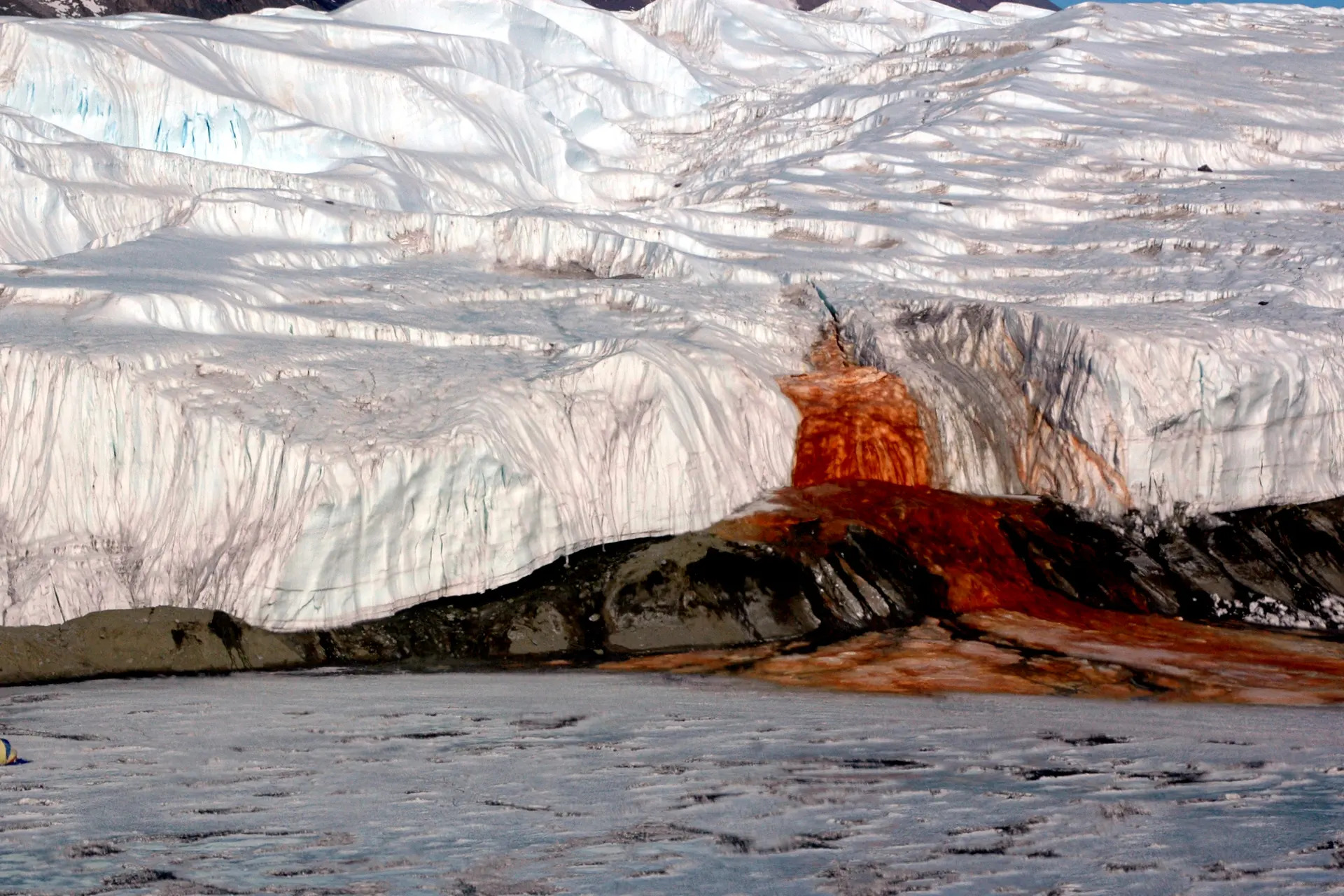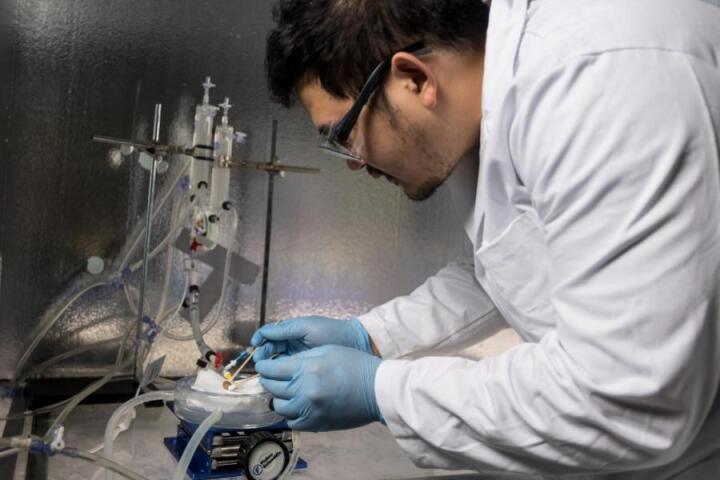 Blood Falls in Antarctica, where scientists have finally gotten to the bottom of why the water is so red. Peter Rejcek
Blood Falls in Antarctica, where scientists have finally gotten to the bottom of why the water is so red. Peter Rejcek
–
The bizarre and apparently grisly sight was first discovered in 1911 by geologist Thomas Griffith Taylor, who attributed it to red algae. It was only half a century later that the crimson color was identified as being caused by iron salts. Most intriguingly, the water starts off clear but turns red soon after it emerges from the ice, as the iron oxidizes on exposure to the air for the first time in millennia.
Now a new study has examined samples of the water and found that the iron appears in an unexpected form. It’s not technically a mineral – instead it takes the form of nanospheres, 100 times smaller than human red blood cells.
“As soon as I looked at the microscope images, I noticed that there were these little nanospheres and they were iron-rich, and they have lots of different elements in them besides iron – silicon, calcium, aluminum, sodium – and they all varied,” said Ken Livi, an author of the study. “In order to be a mineral, atoms must be arranged in a very specific, crystalline, structure. These nanospheres aren’t crystalline, so the methods previously used to examine the solids did not detect them.”
This find has implications beyond Antarctica and even beyond Earth. Just a few years ago, scientists managed to trace the water back to its source – an extremely salty subglacial lake under high pressure, with no light or oxygen, and a microbial ecosystem that’s remained isolated for millions of years. Life could exist on other planets under similarly inhospitable conditions, but we might not be sending the right kind of equipment up to spot it.
“Our work has revealed that the analysis conducted by rover vehicles is incomplete in determining the true nature of environmental materials on planet surfaces,” said Livi. “This is especially true for colder planets like Mars, where the materials formed may be nanosized and non-crystalline. Consequently, our methods for identifying these materials are inadequate. To truly understand the nature of rocky planets’ surfaces, a transmission electron microscope would be necessary, but it is currently not feasible to place one on Mars.”
The research was published in the journal Frontiers in Astronomy and Space Sciences.
Source: Johns Hopkins University
–























